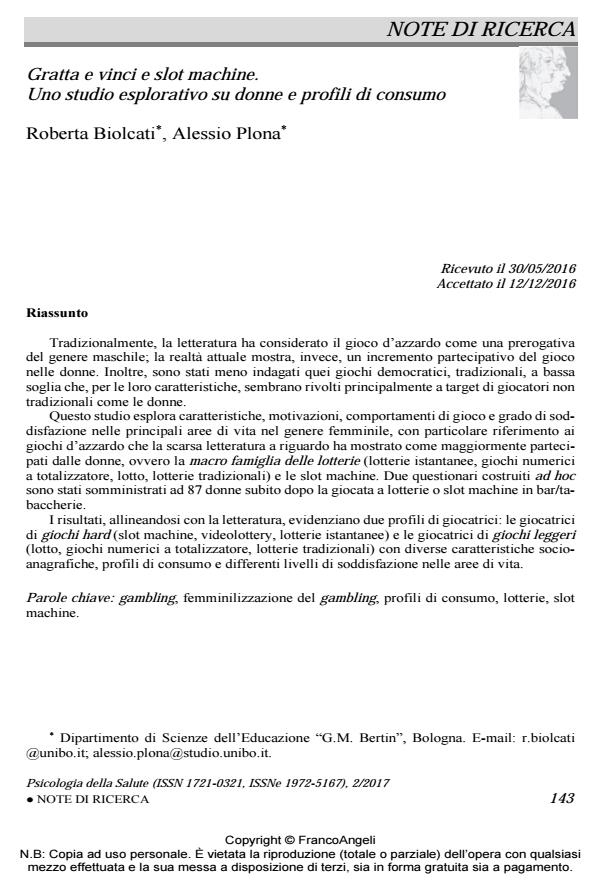Scratch cards and slot machine. An exploratory study on women and consumption profiles
Journal title PSICOLOGIA DELLA SALUTE
Author/s Roberta Biolcati, Alessio Plona
Publishing Year 2017 Issue 2017/2
Language Italian Pages 17 P. 143-159 File size 226 KB
DOI 10.3280/PDS2017-002007
DOI is like a bar code for intellectual property: to have more infomation
click here
Below, you can see the article first page
If you want to buy this article in PDF format, you can do it, following the instructions to buy download credits

FrancoAngeli is member of Publishers International Linking Association, Inc (PILA), a not-for-profit association which run the CrossRef service enabling links to and from online scholarly content.
Traditionally, the literature has considered the gambling as a male prerogative. The current reality shows a participatory increase of gambling in women. In addition, democratic, traditional and low threshold games that, by their nature, seem mostly targeted on non-traditional gamers such as women, has been less investigated. This study aims to explore characteristics, motivations, gaming behaviours and satisfaction levels in the main areas of life in the female gender, specifically referred to games that the limited literature has shown as more participated by women, namely lotteries (instant lotteries, numerical games with national totalizer, lotto, traditional lotteries) and slot machines. Two questionnaires constructed ad hoc have been administered to 87 women after that they have gambled on lotteries or slot machines in bar/tobacco shops. The results, according with the literature, highlight two profiles of gamblers: women who play hard games (slot machines, video lotteries, instant lotteries) and players of soft games (lotto, numerical games with national totalizer, traditional lotteries) with different socio-demographic characteristics and consumption profiles and different levels of dissatisfaction in their lives.
Keywords: Gambling, feminization of gambling, consumption profiles, lotteries, slot machines.
Roberta Biolcati, Alessio Plona, Gratta e vinci e slot machine. Uno studio esplorativo su donne e profili di consumo in "PSICOLOGIA DELLA SALUTE" 2/2017, pp 143-159, DOI: 10.3280/PDS2017-002007